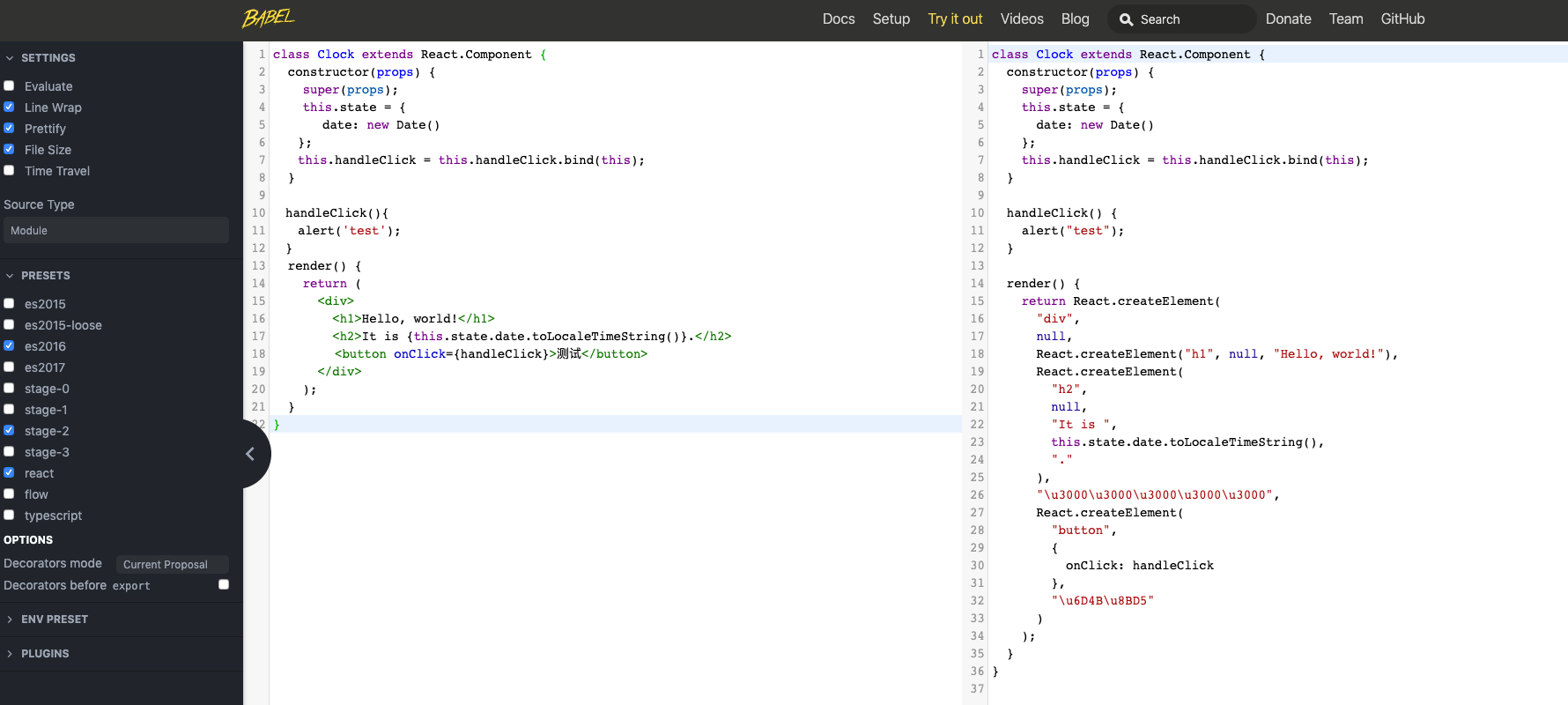如果你看过React的官方文档,就会对怎么给局部state赋值有一定的了解。如下代码:
class Clock extends React.Component { constructor(props) { super(props); this.state = {
date: new Date()
};
this.handleClick = this.handleClick.bind(this);
}
handleClick(){
alert('test');
}
render() { return ( <div> <h1>Hello, world!</h1> <h2>It is {this.state.date.toLocaleTimeString()}.</h2>
<button onClick={handleClick}>测试</button> </div> ); } }
官方文档指出,如果你使用class组件并使用state、定义一些方法,那么需要注意以下3点:
- 需要在 class 构造函数 constructor中为
this.state赋初值! - 需要在 constructor中调用super(props),否则无法使用this.props;
- 在javascript中,class的方法默认不会绑定this, 如果你忘记绑定this.handleClick并把它传入了onClick,当你调用这个函数的时候this 的值是undefined.
但是,你是不是也见过这样的代码,如下:
class Clock extends React.Component { state = { date: new Date() }; handleClick = ()=>{
alert('test');
} render() { return ( <div> <h1>Hello, world!</h1> <h2>It is {this.state.date.toLocaleTimeString()}.</h2>
<button onClick={handleClick}>测试</button> </div> ); } }
它更简洁,不用以上注意以上三点,只要直接定义state对象中的变量即可(注意不是this.state),这是为什么呢?
一个简单的方法可以比较两者写法到底有什么不同,那就是使用babel的Try it out 来验证下吧。为了output的代码更具可读性,所以我选择了es2016
可以放大页面看,图片不能看原图
第一种写法:

第二种写法:

对比babel转换后的代码可以看出,第二种写法其实state也是定义在了constructor中。